|
Home
Crosses of Unknown Origin
Crosses Requiring Verification
MALTESE CROSSES OF UNKNOWN ORIGIN
Below are some 'different' Maltese Crosses on off-cover adhesive stamps of unknown origin. Have you seen
these on-cover? If so, could we publish them in forthcoming editions of our book with due credit to you for
their use?
AC
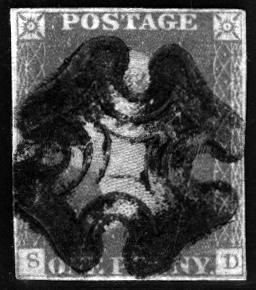
This is a most unusual Maltese Cross with over-inked outer sections. The stamp is a 1d red from black Plate 11
lettered SD showing the constant roller flaw variety (SG Spec. AS74c).
1d red, SD
Bill Barrell List 104, Ref. 47518

AB
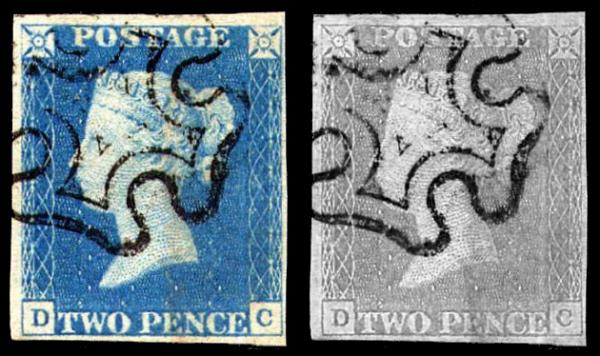
This Maltese cross shows a well-inked complete strike with the only anomaly being that the diamond
is missing except for the points, two of which are very weak. The orientation of the two stronger points
is at right angles to the narrow arm of the
inner cross. We know that Cloghnakilty had a similar Maltese Cross strike,
but that in that case, the two residual diamond points are in the direction of narrow arm of the inner cross.
1840 2d blue, DC
S. David Rockoff Collection

AA
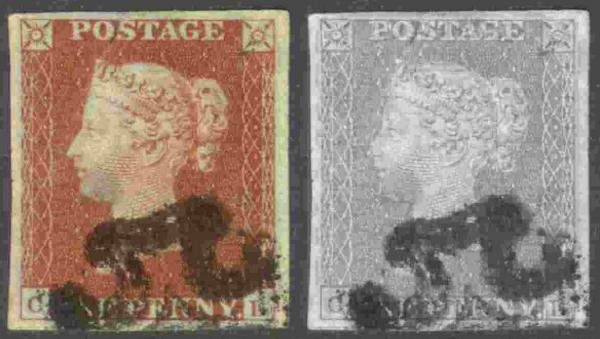
This Maltese cross is a fine example of retained debris between the
inner and outer crosses.
1d red, CL
Peter Osborne Collection

Z
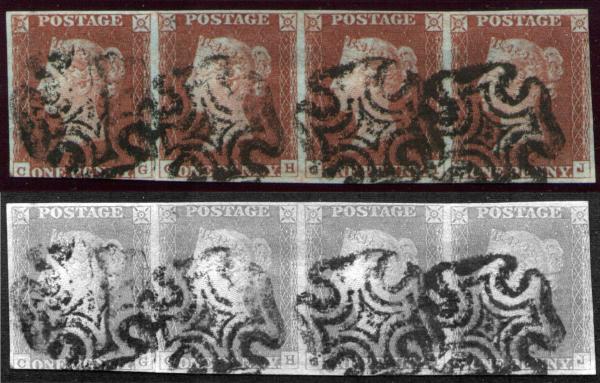
This strip of four shows a mark in the diamond, slanted the same way in
four successive strikes. There was likely a constant piece of wax or other debris stuck in
the obliterator but we do not know the duration of this and it may have
constituted a consistent finding for that post office.
1d red, CG-CJ
Anthony Smith Collection

Y
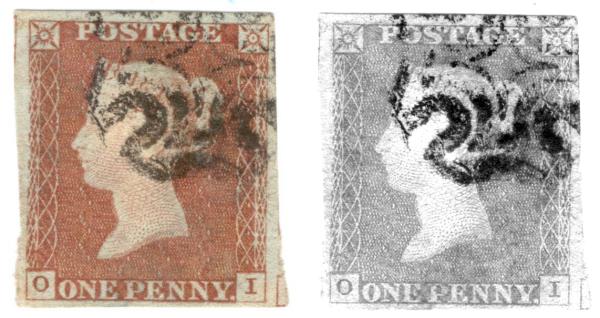
This adhesive stamp shows part of a Maltese cross in which there are very
thick margins to the outer cross and inordinately thick arms to the inner
cross, thicker than any seen previously. The diamond has four long points.
1d red, OI
S. David Rockoff Collection

X
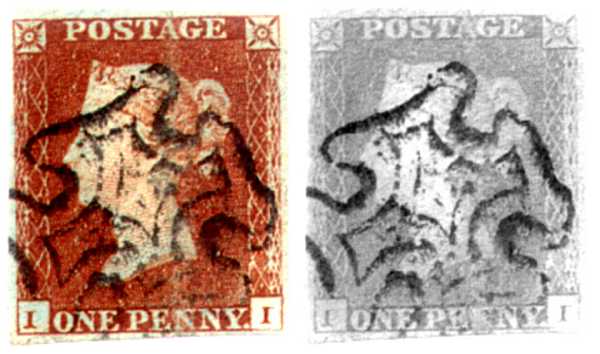
This Maltese cross is one of the strangest in that the degree of asymmetry of its components is so great that
one wonders if there was some rapid shift of the obliterator at the time of the strike, or letters under this
one in a stack which caused there to be this bizarre appearance. These asymmetries affect the outer cross, outer cross
loops, and inner cross arm lengths and end plates.
1d red, Plate 20, II
S. David Rockoff Collection

W
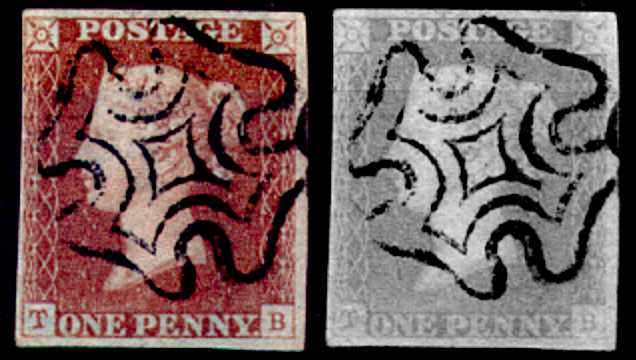
This Maltese cross shows one very long diamond point in a Common cross with otherwise usual features.
1d red, Plate 28 TB
S. David Rockoff Collection

V
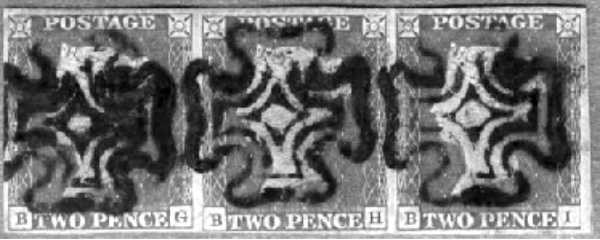
The Maltese cross shown on these three strikes are very similar to that shown in item 'G'. Note that as the
postal clerk stamped the cross three times starting on the left, after inking
the obliterator, filling-in of the points of the diamond occurred on all strikes, even with decreasing amounts of
ink. This suggests that debris was retained in the points.
2d blue, BG-BI
First Class Stamps Ltd

U
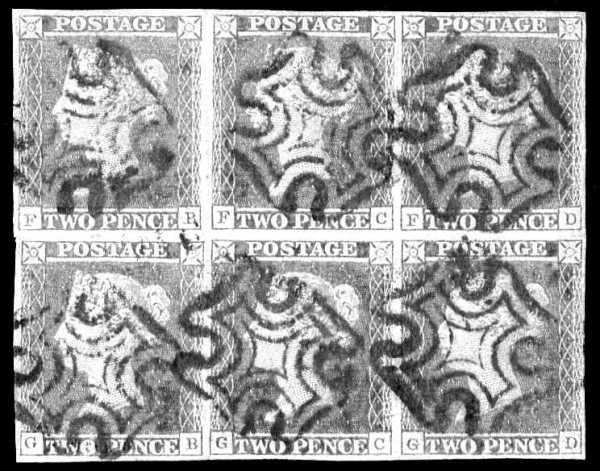
The six stamps in this block show a consistent extra-long diamond point opposite the
narrow arm of the inner cross. (There is also a constant dot at two o'clock between the inner and outer crosses in five
of the six strikes.)
2d blue, Plate 3, FB-GD
Doug McGill – My Penny Blacks

T
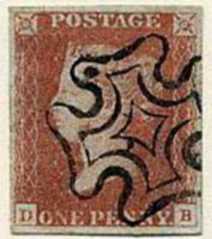
This cross shows two dots in the cross in a strike that shows neither overinking nor a strike defect.
1d red, DB
Simon Hemmings

S
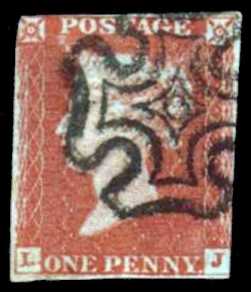
This curious cross has a well-defined circle located exactly in the centre of the diamond in an otherwise
normal-appearing Common Cross. This does not look like an inking or strike defect and a possible
explanation is that the circle was an integral part of the obliterator.
1841 1d red, LJ
Philip Robinson Collection

R
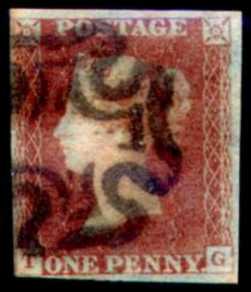
Empty centre cross that does not appear to be the result of an inking or strike defect.
1d red, Plate 24, TG
S. David Rockoff Collection

Q
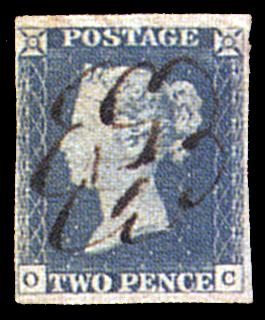
This is an example of a cancellation composed of carefully made, artistic pen lines as a substitute
for a Maltese Cross cancellation.
1840 2d blue, Plate 1, OC
Schwanke, 3 Feb. 2000, Lot 294
Karl Louis cert.

P
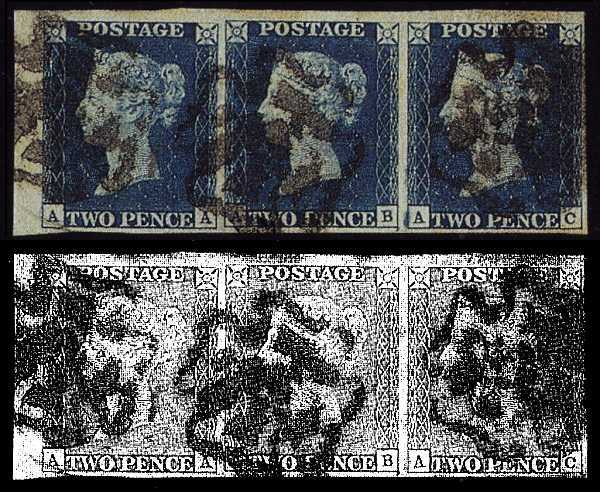
Although the 1996 auction decription said that this cross was 'of the sort associated with replacements for worn
or damaged cancellers, crudely carved from cork or wood', there is little evidence that any such obliterators were
ever manufactured. In this example the shape of the outer cross appears more or less normal, but the cause of the abnormal
appearance of the central elements of the cross is unknown.
1840 2d blue, Plate 2, AA-AC
Christie's, 18 June 1996, Lot 142

O
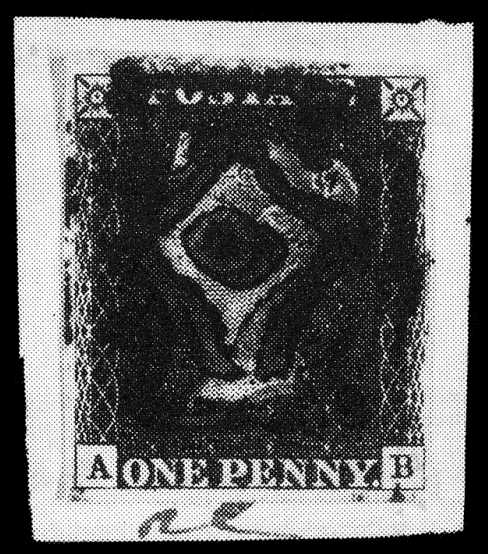
This Maltese cross was described in the Harmers 1986 auction catalogue as distinctive, and an 'unusual overinked
black Maltese Cross with solid centre, margins all round, on small piece (not tied)'. This is a bizarre
rendition of a cross that has a double-lined quality and is thus likely the result of having been
produced from a crude, locally-made obliterator (a double-lined effect would have been unlikely in a hand-drawn
cross).
1d black, Plate 6, AB
Harmers, 26 Nov. 1982
Harmers, 18 Nov. 1986, Lot 79 (£159, est. £100)

N
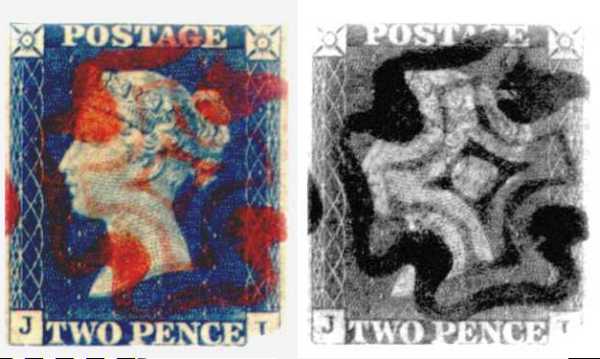
1840 2d blue, JI
S. David Rockoff Collection

M
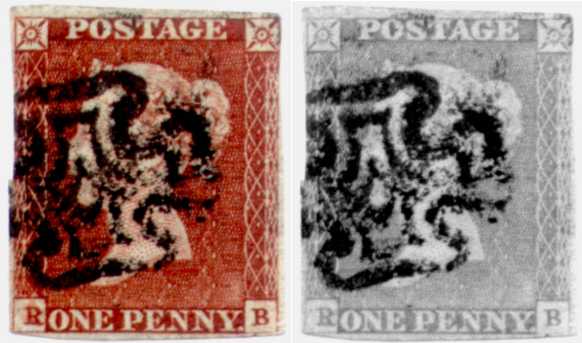
1d red, Plate 33, RB
S. David Rockoff Collection

L
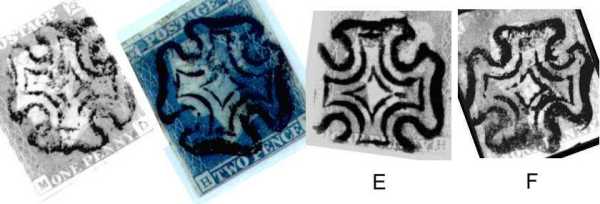
The two stamps on the left show Maltese Crosses with one very long arm to the inner crosses in otherwise unremarkable
Common Crosses. This finding is very similar to that seen in Unknown Origin examples E and F (see below), which are shown here again for
comparision. IT IS THE NARROW ARM OF THE INNER CROSS THAT IS ELONGATED IN ALL FOUR EXAMPLES.
1841 1d Red, Plate 36, MD
S. David Rockoff Collection
1841 2d Blue, Plate 3, HD
S. David Rockoff Collection

K

Strip of four 1d red stamps showing constant break in outer cross.
Below are shown the individual stamps, rotated so that the narrow arm of the
inner cross is oriented to the west, showing the outer cross break to be in the bottom
part of the eastern margin of the outer cross.
The third stamp strongly indicates that in the way in which this handstamp was being used, it was
only good for two strikes (assuming the post office clerk worked from left to right). Also, it shows that
the break was present on the re-charged (with ink)
handstamp, indicating that it may be a break and not an area on the inkpad which has no
ink -- e.g. if a small piece of paper was adhering to the inkpad.
Given that the plate is 41 (registered on 6 November 1843), this strip was cancelled late
in the MX era and these strikes likely represent damage to the obliterator.
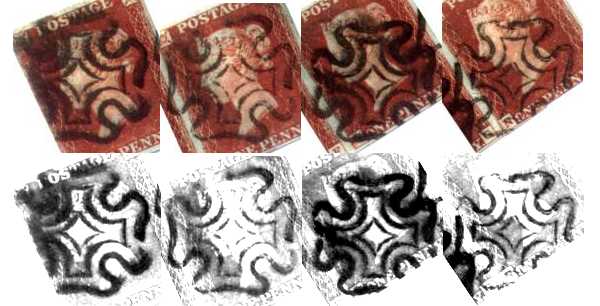
1d red, Plate 41, NE-NH
S. David Rockoff Collection

J
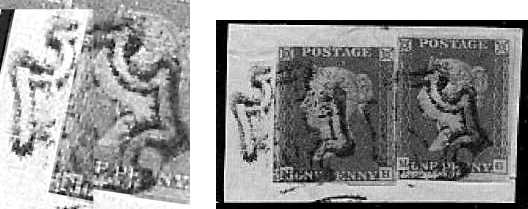
This pair of stamps is each struck with a Maltese Cross showing the entire inner cross
being very close to the outer cross, and having very long, flat end plates without points;
the diamond is very large. This cross is different from any others we have seen.
(The image to the left is a composite of the two Maltese Crosses shown on the adhesive stamps.)
1d red, Plate 20, MH, MG, with black Maltese Crosses
Frank Tyler Collection

I
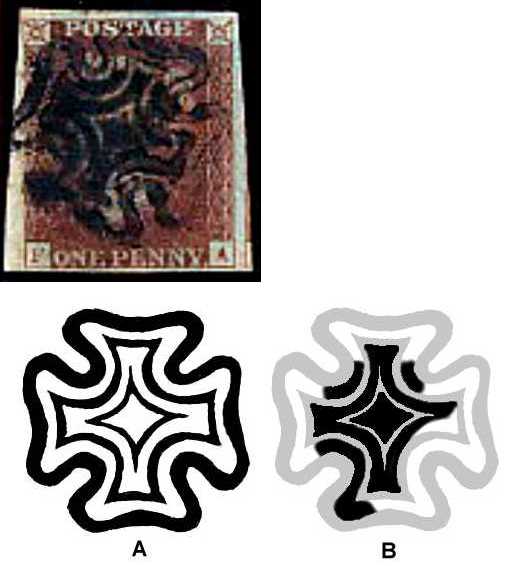
This is a strange cross, quite unlike anything else we have seen. In the diagram (above), 'A' represents what
the cross should look like; 'B' shows diagramatically how parts of the design which should be empty have filled
in and printed, while parts of the design which should have printed have not, or have printed with a
double-lined effect. The result is a strange, part-negative effect, quite extraordinary. While we are not certain
what is causing all of the findings, we believe that the best explanation is that at the time of the strike,
there was debris collected in the obliterator in the areas that are blackened in diagram 'B'.
Any other ideas or explanations would be welcome.
1d red, Plate 15, FA, with black Maltese Cross
Frank Tyler Collection

H
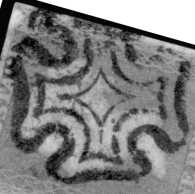
Maltese Cross with distorted, tilted end plate of the south-pointing arm of the inner cross,
and with two long and two short diamond points.
1d red, LI
S. David Rockoff Collection

G
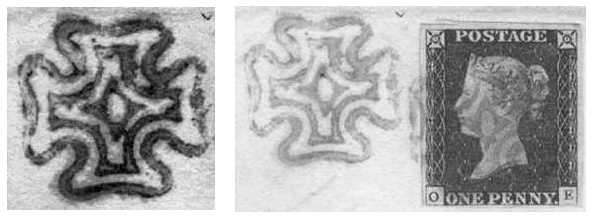
A circle (or oval) in the diamond sometimes appears to be due to a curious spreading of ink when
over-inking has occurred. However, in this case, although the post office of origin is not known,
the two strikes of this Maltese Cross appear to have a constant defect since it is present on two
strikes, one on the adhesive stamp and the other next to it.
1d black, OE, Maltese Crosses in red

F
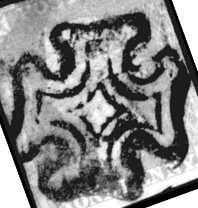
Maltese cross with single elongated arm to inner cross and associated adjacent outer cross loop,
almost identical to 'E' below. [Also see 'L' above]
S. David Rockoff Collection

E
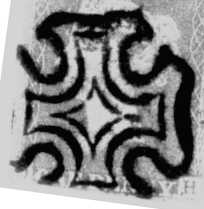
This cross is characterized by an markedly elongated arm of the inner cross associated with a deformity
of the outer cross loop near that elongated arm, but the latter perhaps being due to an inking defect.
Also shows two very long diamond points and two slightly long points. [Also see 'F' and 'L' above]
1d red, Plate 20, OH
Nigel Borlase-Hendry Collection

D
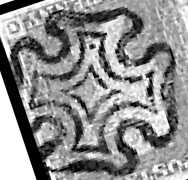
This illustration is from a pair of stamps, each struck with a Maltese Cross showing a dot in the
narrow inner cross arm, suggesting that it is a constant defect.
1d red, Plate 21, FB-FC with black crosses
Frank Tyler Collection

C
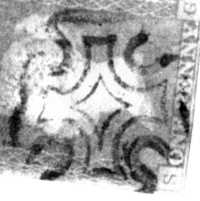
Cross damaged on its northwest corner, causing marked deformity of the outer and inner crosses. Also has a single elongated
point on the diamond such as is seen in the crosses of Chelmsford, Portarlington and Lancaster. There is the incidental finding
of a double-lined effect noted in the southeast portion of the outer cross. 1d red, Plate 21, SG
S. David Rockoff Collection

B
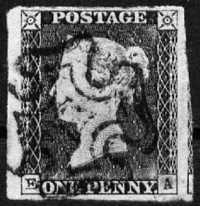
Deformity of the northeast outer cross loop with it being much deeper and wider than the other three outer cross loops.
This is most likely the result of a manufacturing defect since damage to the cross in that corner of the obliterator might have
deformed the affected outer cross loop, but would not have made the affected loop deeper. Also note that there is no evidence of
an inking or strike abnormality. 1d black, Plate 1A, EA
QV Pennies

A
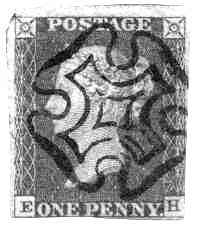
This Maltese Cross is well-inked and struck and has a possible manufacturing defect within the southern arm of the inner cross,
consisting of two clearly defined vertical lines equally spaced between the margins of the arm, and a break in the SE loop of
the outer cross. 1d red
Mike Jackson Collection (ex Alcock; ex Pickering)

|